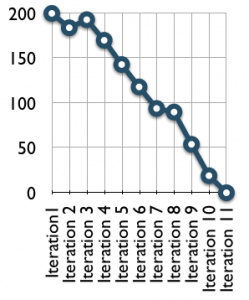I bet you $50 that even if I told you the way to boost your team’s performance without increasing your costs – you wouldn’t do it. The situation is actually worst than that! I’ll add another $50 that I even know what you will tell me once I tell you. You will say “We can’t do that in our organization“.
Ready to find out?
Stop assigning people to projects and let them pick the project they wish to work on – that’s it!
I can hear you - ”We can’t do that in our organization” – there, I just saved $100.
Seriously, it is that simple. Think back to a project you worked on – were you assigned or did you select it yourself? Now do this exercise. Think back to something you enjoy, I mean you truly enjoy - were you assigned or did you pick it yourself?
Have you ever heard of Tom Sawyer withewashing the fence? As Mark Twain once said, “Work is something you are forced to do while leisure is something you choose to do”.
I don’t mean to pretend that work is a hobby but many organizations ignore people’s intrinsic motivation and personal drive when they (i.e. the managers) assign people to projects. No matter what the project is about, there will always be people interested in working on such a project. Ever heard of Crowdsourcing?
In most organizations, it may not be easy to let people select their own project, but it is feasible. Some organizational constraints may need to be modified, project assignment may need to be done differently, some resource planning may be required but all of this is feasible.
As one of the participant highlighted “I used to be bored to death in my normal job until one day, I asked (begged) to be part of a specific project. I’m so glad they granted my wish. I now work 55 hours a week! I am super motivated and nothing is going to make me want to leave that project”. Still think letting people select their project is a bad idea? - Analytical-Mind.
Go ahead, give it a try and see the results for yourself. I have tried this approach on many occasions and the results always impress me.

 The content of the template is updated at the end of each Sprint. Below, the SunSet graph after 6 sprints.
The content of the template is updated at the end of each Sprint. Below, the SunSet graph after 6 sprints.
Recent Comments